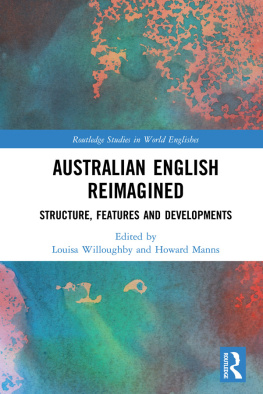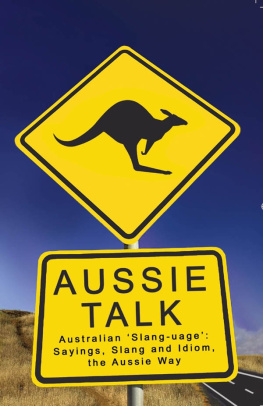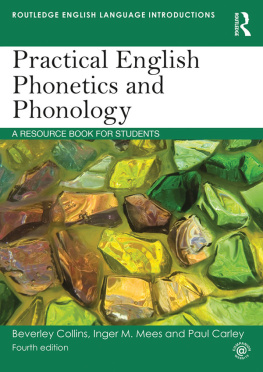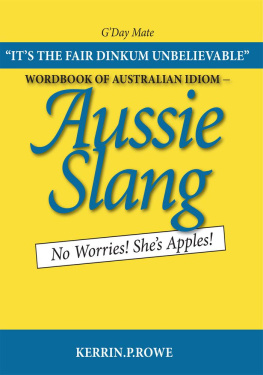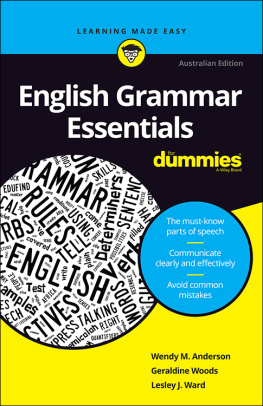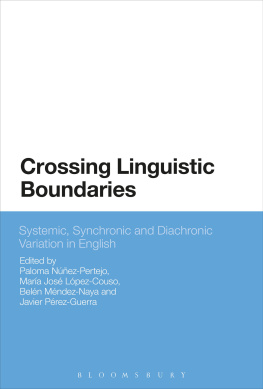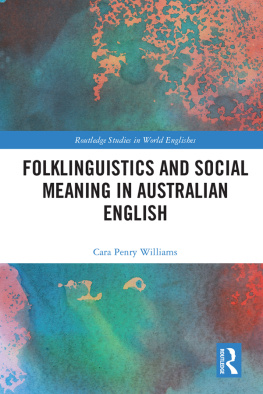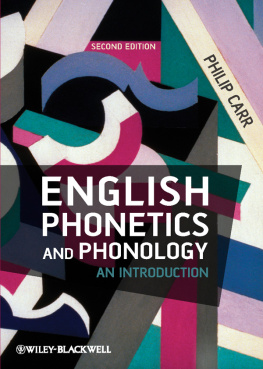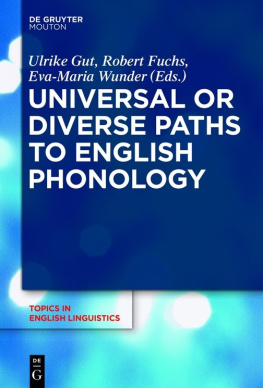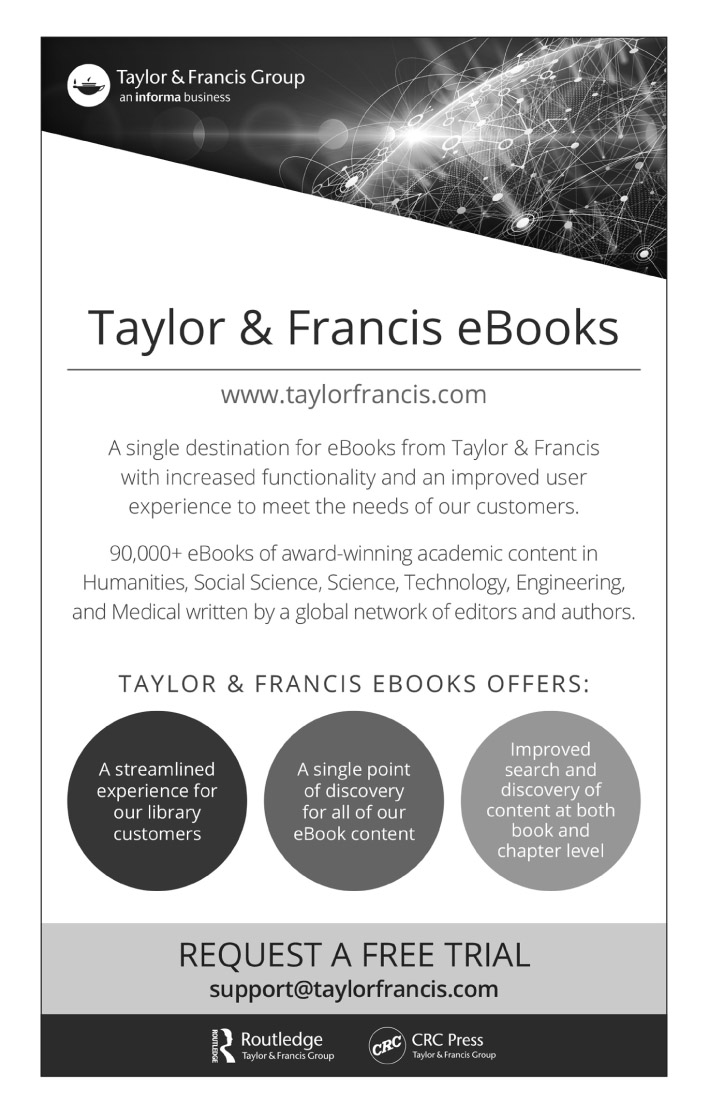A book of this nature is always a team effort, and many people have made important contributions to the genesis of this volume. First and foremost we wish to acknowledge and thank the authors of each chapter, without whom there simply would be no volume. We especially thank you for your eagerness to contribute chapters in your field of expertise at a time when the work of writing review chapters is not always valued by the powers that be within Australian universities. We were overwhelmed by how quickly and enthusiastically authors responded to our invitation to take part in this volume, and we hope the volume showcases the array of exciting work being undertaken by both old hands and emerging scholars of Australian English. A review volume on Australian English has been a long time coming, and we are particularly pleased to be able to offer one with contributions from so many luminaries in their fields as well as to introduce the voices of a number of younger scholars who will lead Australian English research for many years to come.
In addition to chapter authorship, a number of other scholars and friends have provided valuable suggestions and advice for the book as a whole. Here we wish to thank John Hajek, Kate Burridge, Sydney Kingstone, Donna Starks, Izzy Burke and the anonymous reviewers of the volume. The proposal for this book was written while Louisa was on sabbatical, and she gratefully acknowledges her host, Mayumi Bono at the National Institute of Informatics, Japan. At Routledge we thank Katie Peace for her work around commissioning the volume and Samantha Phua for her unflinching dedication in answering our many technical emails.
1
Introducing Australian English
Louisa Willoughby and Howard Manns
Introduction
This book brings together leading scholars of Australian English (AusE) who review its features and variation in its use. Australian English is perhaps best known for its vocabulary and through stereotyped portrayals of Australians and their English in the global media. At the best of times, these stereotypes see Australians and their ways of speaking as easy-going, humorous and egalitarian (e.g. Sussex, 2004; Sinkeviciute, 2014). However, these stereotypes also implicitly or explicitly construe Australians and their English as white, male and, at times, unsophisticated (see Ronowicz & Yallop, 2007). Scholars in the current volume strip away these stereotypes and show Australian English for what it is: a recognised World English, rich in regional, social and multicultural systematicity. In doing so, authors provide a 21st-century review and reimagining of Australian English, theoretically, methodologically and conceptually.
Australian English as a World English
The foundations of Australian English, like American English, are linked to the first dispersal of 25,000 mother tongue English speakers, mostly from the south and east of England, from the 17th to the 18th centuries (Jenkins, 2009:5). In both Australia and the United States, the English-speaking settlers entirely (and often violently) displaced the indigenous populations and their languages. The English varieties spoken by the settlers came to dominate and evolved into new Englishes distinct from their British Isle origins. Yet American English, Australian English and British English share similarities and remain intertwined. The American, Australian and British linguistic contexts have historically been driven by a monolingual mindset (Romaine, 1991a) and sit in contrast to those multi-lingual contexts to which English arrived in the second dispersal (Africa, South Asia and Southeast Asia). Australian English is closer to British English in terms of its phonology and lexicon, but both, like most World English varieties, have come under the global influence of American English. All three varieties wield influence on other regional and global varieties of English. Australian English has been described as being at the epicentre of English in the Asia-Pacific (Leitner, 2004:1), and it wields some influence on New Zealand English and possibly on Fiji and Singapore (see Peters, 2009).
Australian English is comparatively understudied, but its status as a World English variety has been a topic of interest for nearly 50 years. One of the first collections of papers on Australian English (Turner, 1972) considers World Englishes a key theme. Turners (1972) volume spoke to the concerns of an Australian public coming to grips with the very existence of Australian English and what it meant to speak or write Good Australian English. Until WWII, there had been a bias toward British English in Australia, and even educated Australian English was considered nonstandard. By the 1970s, Australian English had become more visible in the Australian media, the Australian government had published its first style manual and a Labor government with noticeably broad Australian accents came to power under the leadership of Gough Whitlam (Collins & Blair, 2001; Peters, 2014). This led to an identity crisis (see Collins & Blair, 2001), including concerns about to what degree British English did or should influence Australian English, what impact American English was having on Australian English and what, if any, language features might be considered distinctively Australian. These themes were taken up in a series of volumes on Australian English, including Turners but also Collins and Blair (1989) and Romaine (1991b). However, it is through a series of 21st-century volumes on Australian English (e.g. Blair & Collins, 2001; Peters, Collins & Smith, 2009) and Australian contributions to World Englishes collections (e.g. Cox & Palethorpe, 2012; Peters, 2014) that we get our best sense of Australian English as a World English variety.
One key question in debates about World English varieties is to what degree they have achieved independence from their (in most cases) British origin. Schneiders (2007) model of postcolonial English development describes this in terms of endonormative stabilisation and subsequent entry into the Differentiation Phrase (the emergence of internal variation). Australian English has achieved endonormative stabilisation, but has done so comparatively recently. A distinctive Australian way of speaking likely emerged from the opening days of the Australian colony. However, as noted previously, Australians remained oriented to Britain and British English until WWII. This is reflected in statements like the following from an ABC correspondent in 1942: There is not, and should not be, any difference in standard English as spoken here, in the Motherland, or elsewhere in the Empire (Ronowicz & Yallop, 2007:115). However, WWII saw the rapid dissolution of ties with Britain, the sudden need for Australian self-reliance and Australia paying closer attention to its role in the Asia-Pacific region. Further, from the 1940s, Australian English found a pair of champions in A.G. Mitchell and Arthur Delbridge, who described and defended Australian English (especially the accent) as a legitimate national variety. Australian English has only achieved endonormative stabilisation in the last few decades, whereas, in comparison, American English had achieved this by the start of the 20th century (see Peters, 2014).
Australian English is now among a handful of settler colony Englishes to have entered Schneiders final Differentiation Phase (Peters, 2014). The shift from endonormative stabilisation to differentiation raises a series of new questions for Australian English scholars and those scholars interested in Australian English as a World Englishes variety. For instance, to what degree have Australians attitudes toward their English variety evolved? Australians historic orientation to Britain has meant that, since the 19th century, they have suffered a cultural cringe to all things Australian. Entry into the Differentiation Phase suggests that there would be greater acceptance of the local, national variety, but recent work suggests the cringe lingers, at least for some people in some contexts (see Willoughby, Starks & Taylor-Leech, 2013; Severin, 2017). Next, to what degree have methodological and theoretical innovations come to bear on our understanding of Australian English as a World English variety in its own right rather than merely a British-derived variety? For example, Australian English is perhaps best distinguished from other world varieties by its phonology (Cox & Palethorpe, 2012). Mitchell and Delbridge (1965) devised a transcription system for this phonology, but based this system on British English. In more recent years, Felicity Cox and colleagues (e.g. Harrington, Cox & Evans, 1997; Cox, 2006, 2008), using acoustic analysis, have proposed a revised transcription system for Australian vowels which uses the International Phonetic Alphabets cardinal vowels as the reference system rather than the British English standard. Also, the Differentiation Phase suggests the emergence of greater regional variation for Australian English. Australian English has historically been described as having less regional variation than other varieties of English like British English or American English (Cox & Palethorpe, 2012; Peters, 2014). However, recent studies have demonstrated greater awareness and use of regional variables among Australians (Billington, 2011; Loakes, Hajek & Fletcher, 2017).

